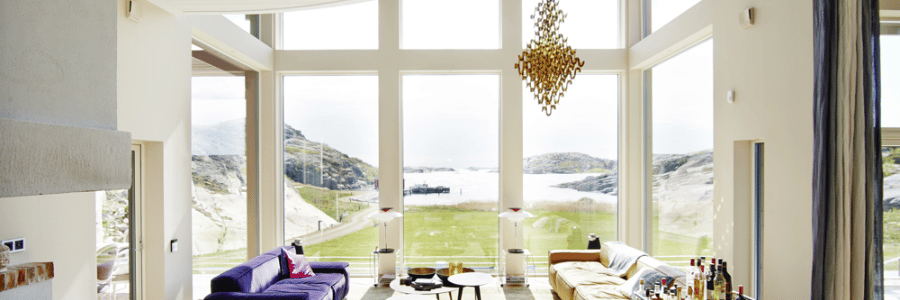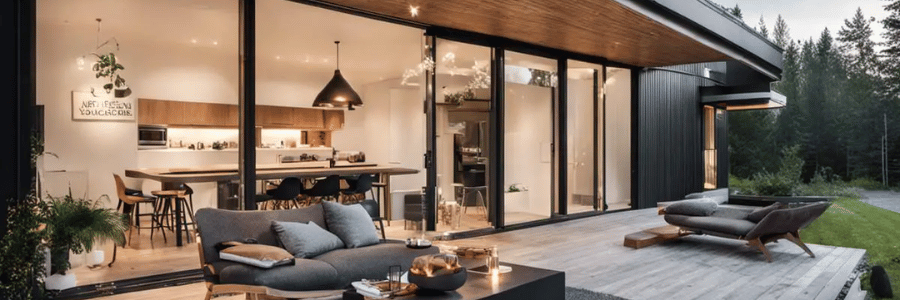Scandinavian design, known for its clean lines, minimalism, and functionality, has become one of the most influential design styles in the world. Rooted in the natural beauty and climate of the Nordic countries, Scandinavian design focuses on creating spaces that are not only aesthetically pleasing but also practical and comfortable. One of the most important elements in Scandinavian interiors is the use of windows. In this blog post, we’ll explore how windows play a pivotal role in contemporary Scandinavian design and how they help define the style’s signature look and feel.
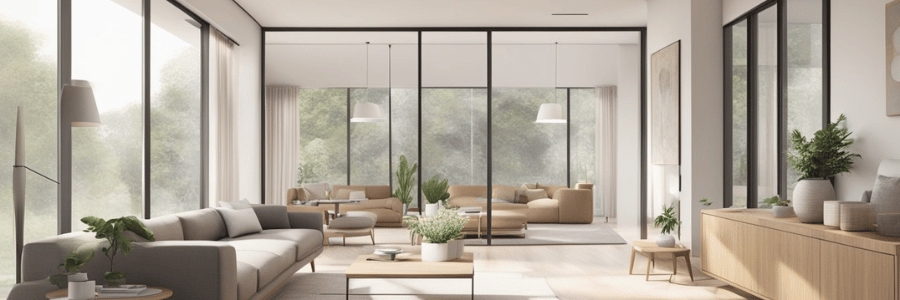
The Importance of Natural Light
In Scandinavian countries, where the winters are long and the days can be short, natural light is highly prized. Windows are central to bringing as much natural light into the home as possible, helping to combat the darkness of winter months and creating a bright, airy atmosphere year-round. Large windows, often floor-to-ceiling, are commonly used in contemporary Scandinavian homes to maximize sunlight and make interiors feel open and welcoming.
By incorporating ample natural light, Scandinavian homes feel spacious and connected to the outdoors, even in urban settings. This connection to nature is one of the key tenets of Scandinavian design, where bringing the outside in is as important as the design of the interiors themselves. The use of light makes spaces feel fresh and energized, creating a sense of well-being for those inside.
- Benefit: Maximizes natural light, which enhances the feeling of openness and connection to the outdoors.
- Best for: Homes in northern latitudes or those wanting to create bright, uplifting interiors.
Minimalism and Clean Lines
Scandinavian design is characterized by a minimalist approach, with an emphasis on simplicity, functionality, and form. This philosophy extends to windows, where clean lines and unadorned frames take center stage. Windows in Scandinavian interiors often feature sleek, modern designs that blend seamlessly with the surrounding architecture.
The minimalist approach means that windows are typically unobstructed by heavy drapery or ornate trims. Instead, light, airy curtains or blinds are used to maintain the openness of the space. The simplicity of Scandinavian windows allows the focus to be on the natural beauty outside while maintaining an uncluttered, serene interior.
- Benefit: Provides clean, simple lines that contribute to the overall minimalistic aesthetic of Scandinavian interiors.
- Best for: Modern homes or those looking to create a calm and uncluttered environment.
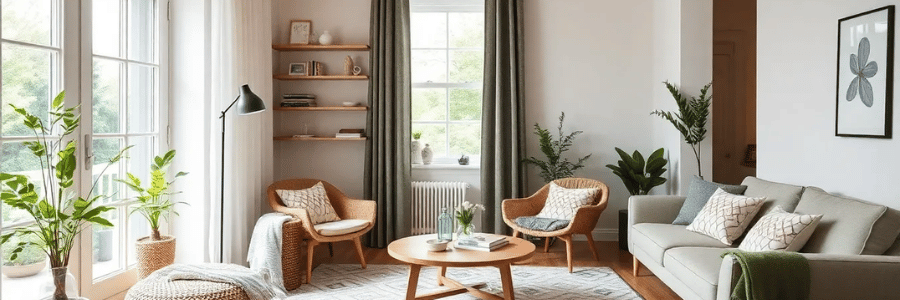
Blending with Nature
In Scandinavian design, nature is an integral part of the living space. The role of windows is not only to allow natural light but also to create a visual connection to the outdoors. Large windows or strategically placed glazing open up to stunning views of forests, lakes, or cityscapes, bringing the beauty of the environment inside. This connection with nature is key to creating a harmonious and peaceful home.
Wooden window frames are often used in Scandinavian homes, enhancing the connection to the natural world and adding warmth to the interiors. Whether framed with natural wood or painted in neutral tones, these windows blend effortlessly into the surroundings and create a calm, natural atmosphere.
- Benefit: Encourages a seamless connection between the indoors and outdoors, promoting a sense of tranquility and well-being.
- Best for: Homes surrounded by nature or those in urban settings wanting to bring the outdoors in.
Functionality and Energy Efficiency
Scandinavian design places a high emphasis on practicality, and windows are no exception. In regions with harsh winters, windows are not just aesthetic elements—they serve a critical function in energy efficiency and climate control. Contemporary Scandinavian homes often feature triple-glazed windows, which provide excellent insulation, keeping the cold out and the warmth in.
The focus on energy-efficient windows aligns with the Scandinavian value of sustainability. Many homes incorporate windows with low-energy coatings, double or triple glazing, and airtight seals to reduce heating costs and minimize the environmental impact of the home. These functional windows contribute to maintaining a comfortable indoor climate without sacrificing the aesthetic appeal of the design.
- Benefit: Increases energy efficiency and comfort, reducing heating costs and promoting sustainability.
- Best for: Homes in cold climates or those prioritizing environmental responsibility.
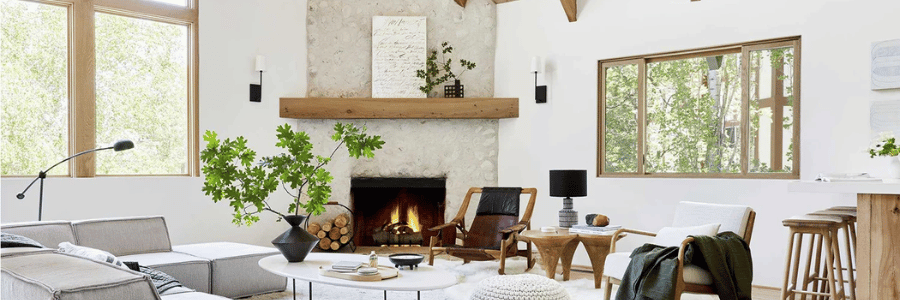
Scandinavian Window Treatments: Simple and Elegant
While windows in Scandinavian design are often left uncovered or dressed with minimal window treatments, there are still ways to enhance their functionality and style. Simple, light fabrics such as linen or cotton are commonly used for curtains and blinds, providing a soft, natural look without overpowering the room. These fabrics allow light to filter through while offering privacy when needed.
Layering window treatments with natural materials such as wood or metal adds an element of texture and warmth to the room, complementing the minimalist aesthetic of the space. Shutters, blinds, or sheer curtains are often chosen for their simplicity and functionality, ensuring that the window design remains clean and unobstructed while offering flexibility in light control.
- Benefit: Keeps the minimalist look intact while offering practicality, light control, and privacy.
- Best for: Spaces that need a balance of natural light and privacy without cluttering the design.
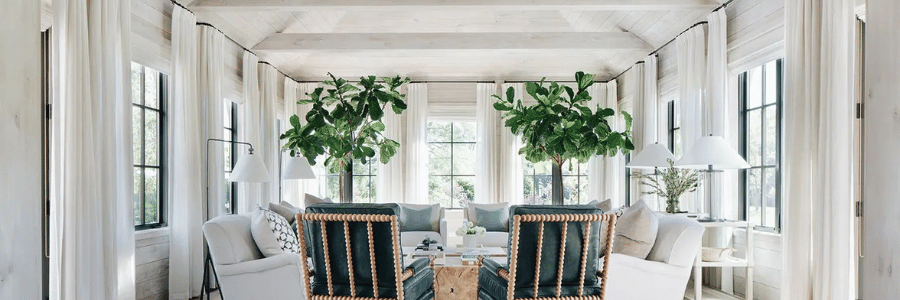
The Role of Windows in Creating Ambiance
Windows in Scandinavian homes also play a vital role in creating ambiance, especially during the long, dark winters. In the absence of abundant sunlight, Scandinavian homes rely on the warmth of natural light and carefully curated lighting to create an inviting atmosphere. The interplay between natural light through windows and interior lighting fixtures adds a sense of coziness and comfort, which is essential in Scandinavian interiors.
The iconic “hygge” concept—often associated with coziness and well-being—is reflected in how windows contribute to the ambiance. Large windows allow as much daylight as possible, and at night, soft lighting from within enhances the cozy feeling of being indoors while the winter winds blow outside.
- Benefit: Creates a cozy, warm ambiance, particularly important during the winter months.
- Best for: Homes in colder climates or anyone looking to create a comfortable, welcoming space.
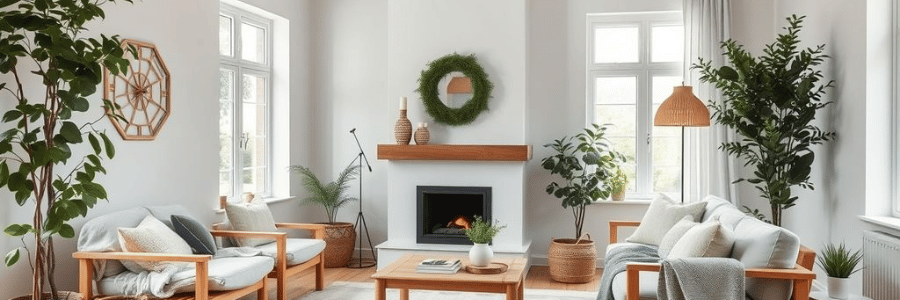
Conclusion
Windows are more than just functional elements in Scandinavian design—they are central to the style’s minimalist, nature-inspired aesthetic. From maximizing natural light to creating seamless connections with the outdoors, windows are integral to achieving the serene, peaceful atmosphere that defines Scandinavian interiors. Whether you’re seeking energy efficiency, beautiful views, or a sense of openness, windows play a crucial role in bringing the Scandinavian design philosophy to life. By embracing the beauty and functionality of windows in contemporary Scandinavian design, you can create a home that is both practical and visually striking, filled with natural light and a deep connection to the world outside.

